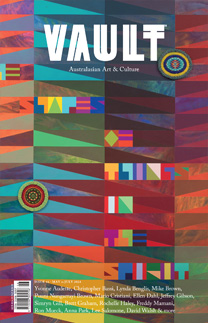The 9th Asia Pacific
Triennial of
Contemporary Art
Brisbane’s Asia Pacific Triennial is now huge – spanning both the Queensland Art Gallery and the Gallery of Modern Art – but its anarchic aesthetic has been raffish and immersive since its beginnings in 1993.
The Asia Pacific Triennial’s signature style stands in marked contrast to other mega-exhibitions like Sydney’s Biennale,which trade on cooler, often more conceptual and tightly driven themes. While it is not unusual to see artists appear in the Asia Pacific Triennial and reappear in other international showcase exhibitions, given the strength of the global contemporary art zeitgeist, APT takes a different view of contemporary art. This year, without inhibition, 81 artists from more than 30 countries and cultures interact with the social change, unrest and vitality of the Asia Pacific region, bringing colour and movement outside any national or international curatorial agenda. Artists are selected for their significance, liveliness or sheer audacity, and APT9’s dynamics include a record number of projects and works co-commissioned with other Asian institutions. A few persistent threads weave through its midst, including an engaging female sensibility.
Narratives of women include stories of shapeshifting tradition and the many matriarchal cultures in the area. Other artists, male and female, probe the way spirituality is affected by technology, the agency of the body and the vulnerability of the natural environment to global pressures. The show imagines future dystopias and utopias, alternative ideas about wealth and currency, and shifting ideas of labour. Art is executed with materials and techniques that may be new, exotic or ancient. The unique voice of APT9 may weave the personal and political into vibrant cultural forms, with an urgent undercurrent of environmental commentary. Curator Zara Stanhope tells VAULT: “Among the many voices are displacement stories, personal and universal narratives, work about the sea and the islands, and the movement of people. There is a softness too, which offers a way to engage.”
A large selection of artworks from Bangladesh and the Pacific, some more commonly seen as craft, offers different ways of understanding and being in the world – a sensibility that lies at the heart of every APT. Countries appearing for the first time include the Republic of the Marshall Islands, the Autonomous Region of Bougainville and the Solomon Islands, and Laos. There is also the largest representation of First Nations artists yet seen in a Triennial, including Australia’s Jonathan Jones and James Tylor, and New Zealand’s Lisa Reihana. Another memorable inclusion is Monira Al Qadiri’s large-scale installation Diver (2018), which appears like an aquarium in the gallery. Inside, synchronised swimmers perform the repetitive movements of divers: an ode to the pearling industry of the Persian Gulf, supplanted by the oil boom. QAGOMA Director Chris Saines says, “It serves as a reminder that, as an industry, mining for oil – like the diving for pearls before it – will, in time, be replaced by another economic force.” And as global power dynamics change, much of the art reflects Chinese influence.
VAULT SELECTED FIVE OF THE EXHIBITION’S SIGNATURE ARTISTS AS A TASTER FOR THE EVENT ITSELF.
QIU ZHIJIE
Qiu Zhijie, born in 1969, is a leading Chinese artist and his Map of Utopia is an exhibition highlight. He lives in Beijing and has been involved with APT before, as curator of a progressive contemporary art project that travelled all over China. Titled The Long March, it appeared in APT5(2006). Since 2012 his focus has been on maps, which partly explains his businesslike approach and the speed of the execution of this particular map of utopia. Busy with exhibition projects all over the world, Qiu allowed only five days for the making of this wall painting, which is “a map of technological ethics, which includes medical ethics, military ethics, information ethics” – all of which explore “the moment we are in, in the world”. Within a platform called Total Art, which encompasses pedagogical, curatorial and publishing projects, Qiu takes a multidisciplinary, transhistorical approach to the human preoccupation with imagining perfect societies.
As he works on the wall with ink and a large brush, the already completed sections appear delicate. The wall is becoming a mountainous landscape rich with the historical associations of traditional Chinese pen and ink. Yet the text is at odds with the beauty of the medium: URGENCY, POPULATION EXPLOSION, PEAK OF MAN CAN CONQUER NATURE, BIOSYNTHESIS, FOOD REVOLUTION, INDUSTRIAL REVOLUTION, EARTH IMMUNE SYSTEM, ENDANGERED SPECIES and ANIMAL WELFARE. Qiu tells VAULT, “My answer to who am I? I am a mapper. I think if you design a new system and the system works, the different parts will start to support each other. The map I make here is based on research and study. I can always have the whole view of different art phenomena. I can be more bold. You can be a good teacher, good artist, good curator; it all feeds into each other. [The practice] becomes circular and supporting.”
In this map, the landscape is an imagined place, which “follows the logic of the relationship between the concepts. Some concepts are so outstanding and important that I have to make it as a peak. For some important ideas it can be a mountain and, for glue of concept, pull them in a groove forward so it is going to be a thread. Two concepts, they have a logical connection: this is the reason for the river. No logical relationship but just they dig each other? It can be a line.” Curator Reuben Keehan believes that this single work unifies the show as it “draws together the disparate artistic traditions from a range of diverse contexts”. Like maps made prior to the world’s Enlightenment rationality, it gives primacy to illustrating principles over representing place and space.
Qiu Zhijie is represented by Chambers Fine Art.
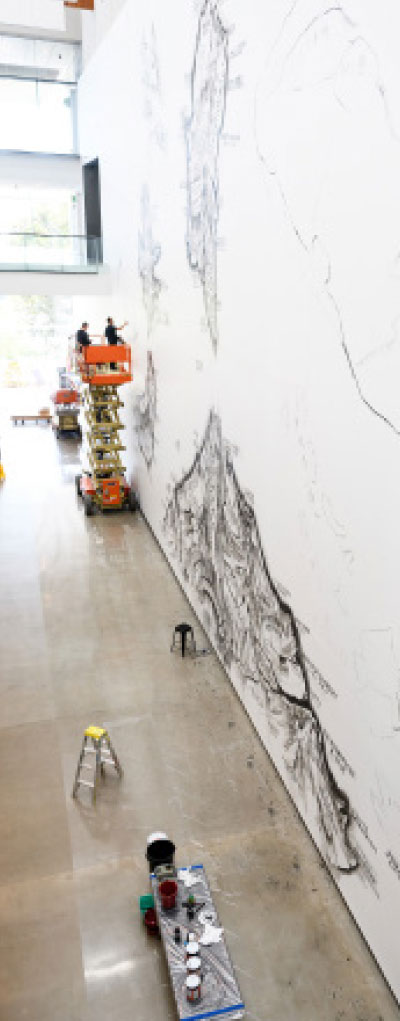
QIU ZHIJIE
Map of Technological Ethics, 2018
Site-specific mural
APT9, QAGOMA Brisbane
Courtesy/ © the artist
and Chloe Callistemon
CAO FEI
Also from China but from a younger generation, Cao Fei was born in 1978, well after the Cultural Revolution. A thread that joins her work to Qiu’s is the concept of utopia, although its expression and subject is in marked contrast. While Qiu’s work depicts current ethical dilemmas using traditional ink painting, Cao’s work imagines the near future, using current technologies to offer a familiar portal. Her AsiaOne series of photographs and video conjures the future of an existing logistics hub known as JD.com, possibly China’s most advanced manufacturing and distribution centre. The narrative sees modified people from 2021 interpreting the abandoned site for the camera, sliding down goods chutes and sitting on conveyor belts. In other industrial spaces, dancers perform 1960s routines to 1990s pop hits. Keehan suggests: “This collapse of historical eras reflects Cao Fei’s long-term interest in China’s rapid social and economic transformations. She also argues that logistics – the link that binds contemporary industries in a global marketplace – might also connect the present and the future.”
Cao Fei is represented by Vitamin Creative Space.
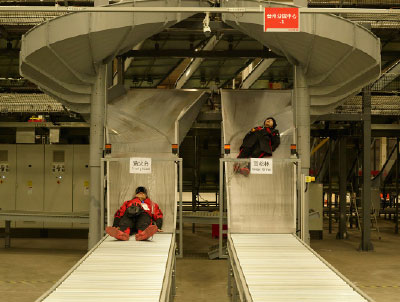
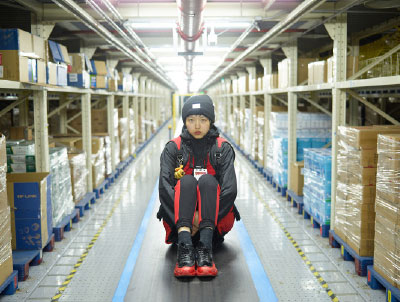
CAO FEI
Asia One (stills), 2018
HD video installation
Purchased with funds from Tim Fairfax AC
through the Queensland Art Gallery | Gallery of Modern Art Foundation
Courtesy the artist and Vitamin Creative Space
JANANNE AL-ANI
Jananne Al-Ani’s moving-image work Black Powder Peninsula (2016) dominates a space within the Queensland Art Gallery. Its title refers to the gunpowder exported by China and the soundscape that draws you in front of the video is hard to identify, but takes you to aircraft noise, cockpit chatter, sonic booms and building demolition. Aerial views from a sewerage plant, electricity-conducting grids and areas of ground with straight-cut troughs segue from one to another. Its ambience is ominous, its aesthetic a landscape that is abstracted, spliced and formal, and engineered. Born in Iraq, Al-Ani moved, with her mother and sisters, to the UK when she was a teenager. Her father was unable to leave with them, and the transition from a comfortable life in a compound in Iraq to a council flat in the UK was alienating, particularly as images of the Gulf War were commonly broadcast, bombs dropping on areas that she knew. Part of what Al-Ani conveys cogently in this work is distilled from aerial footage from World War I, choreographed with images of structures that are common all over the globe. Curatorial Manager Geraldine Barlow says, “While we may view other countries as separate and far away, the links between us are more and more apparent.” Al-Ani’s disembodied landscape has no visible people: one tiny car moves through the landscape; another frame includes a single bird. Yet there is nothing lifeless about its aesthetic
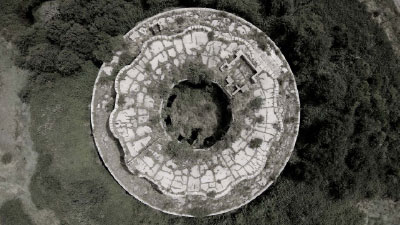
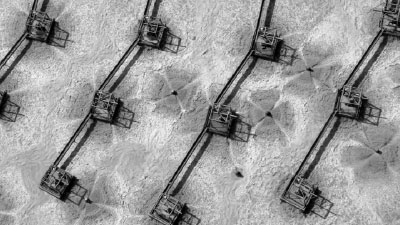
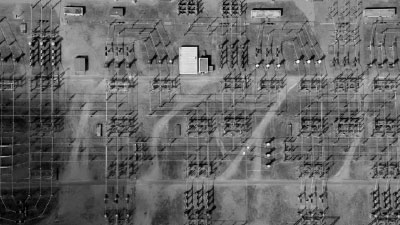
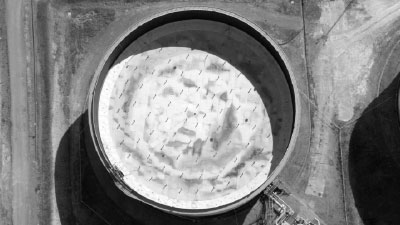
JANANNE AL-ANI
Black Powder Peninsula (stills), 2016
Courtesy © the artist and Black Powder Peninsula
JOYCE HO
Joyce Ho is from Taiwan, but her scenarios unsettle the familiar places and spaces that we inhabit, investing them with a new way of seeing. Reuben Keehan suggests: “Ho’s works hum with unexpected connections, perspectives and possibilities.” Two waiting room installations, part of her YourThreeMinutes series, mirror each other in APT9. Ho explains: “A lot of my concerns about my everyday life is service, or the gesture of service in my country. In the waiting room, I want to know: how do we see this time of waiting? When we are doubled with someone, time becomes something else. There is something like poetry for me there. When we are waiting for the beginning of something or departure of something, time has no meaning.” Ho was born and raised in Taiwan but then moved to the US, and currently lives in Taipei. She regards herself as bicultural and bilingual. She tells VAULT, “A mixture of culture is something that, as an artist, I should recognise instead of going against it. Some people expect artists to have the symbols of your country in your artwork but, in our generation, we are so influenced by different cultures. I recognise that diversity in my practice, and abroad – there are many things I can relate to. Maybe as an artist I should not be stuck with finding what symbolises my country. I think we could embrace that we have many different cultures.”
Joyce Ho is represented by TKG
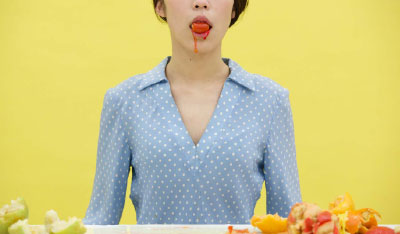
JOYCE HO
Overexposed
Memory, 2015
single-channel
video installation

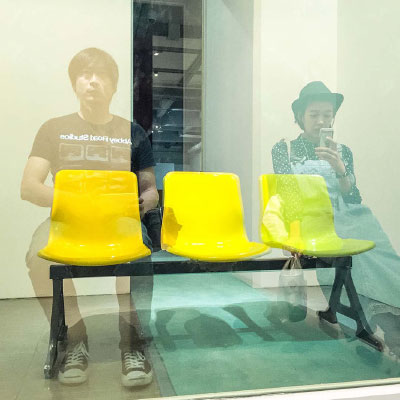
JOYCE HO
On the second day, Saturday, your three minutes…, 2017
Art Basel Hong Kong
Courtesy the artist
and TKG+, Taipei
JAMES TYLOR
An artist whose work also embraces multiple cultures is James Tylor, whose interests cross borders, engage with the natural world, and reflect on custodianship of land. One of many First Nations artists in APT9, he is represented with a series of daguerreotype images that speak to the vulnerability of the natural environment but also his heritage, which includes Maori, Aboriginal, Anglo-Saxon and Norwegian. This series Te Moana Nui – the Polynesian term for the Pacific Ocean – draws on the movement of people across vast waters together with the mingling of cultural beliefs and values. Dark and evocative images focus on Maori and Pacific culture and bounty of the land, together with the price of colonisation, using hands holding, variously: a cross, a tattooed arm elevating a fish hook, manacles, and a tiki (holding the ancestors). Tylor will also create a wall painting with a live sweet potato vine, which notes its symbolic importance as part of cultural interchange. This food plant may be 8,000 years old, and travelled from the Andes throughout the Pacific, from island to island. Similarly, during the exhibition the vine will grow through the work, spreading its influence – rather like the APT itself.
James Tylor is represented by Vivien Anderson Gallery, Melbourne
The 9th Asia Pacific Triennial of Contemporary Art is at Queensland Art Gallery of Modern Art from November 24, 2018 to April 28, 2019
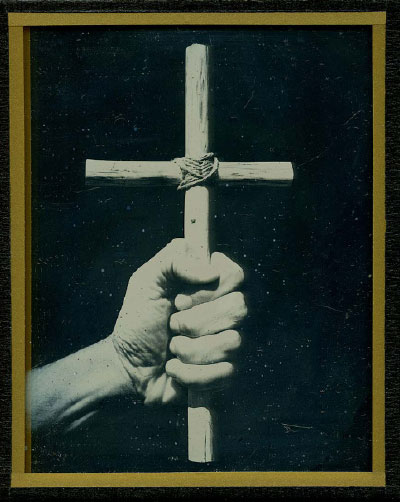
JAMES TYLOR
Atua (In the Name
of God), 2017
daguerreotype
12.7 x 10.2 cm
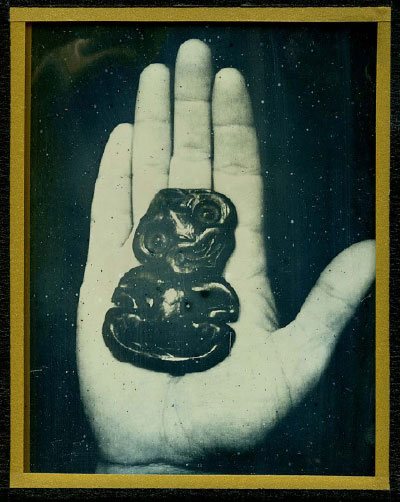
JAMES TYLOR
Whakapapa (Holding
The Ancestors), 2017
daguerreotype
12.7 x 10.2 cm
Courtesy the artist
and Vivien Anderson Gallery, Melbourne
... Subscribe







